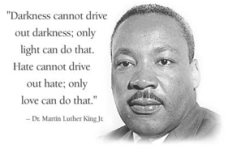Mindfulness Practice and Your Life
The world of work often feels too fast, too complicated, for me. Monday mornings come around and after a weekend of free time those of us who work are expected to “hit the ground running.” We are supposed to tackle multi-tasking and various projects with a vengeance. I write this on what is for me a slower paced Tuesday morning. I survived yesterday, a crisp and sunny Monday in mid-November.
I am grateful for Tuesdays when I usually work for Creative Transitions. And I am in love with any day when my job is to write. Writing involves simply sitting – quiet, still, listening to an inner feeling and voice somewhere deep within me. And then moving into doing by writing. Writing starts with Being, not Doing. Writing is a practice full of mindfulness, a practice at which we know we are not perfect, yet we do because it is often fruitful and full, filling us up with ourselves, our lives, our world in a way that feels deeper and fuller than if we just keep on rushing through our days, our to do lists, one activity to the next, and the next one after that. And the next after that. . . . . . .

Photo by Loretta Crespiatico
I feel tired just thinking about this kind of busyness and multitasking. Some of my coworkers in the mental health world say they drop into bed at 8:30 p.m. most weekday nights. My clients who work in the corporate world say that 5 p.m. is considered the middle of the workday. Twelve hour days, 72 hour (or more)weeks were their norm, until they crashed and burned in both body and mind, and had to take medical leave to recover.
In my first blog post for Creative Transitions I asked:
Where are we racing off to? What are we trying to accomplish? What is it that each of us wants and needs? Is all of this fast doing giving us what we want and need, in our lives, in the in our work, and in the world?
Mindfulness for Making a Difference

We live in a fast culture, at least in the United States. It feels to me as if we do most things fast – eating, emailing, working, errands, conversing – and we’re multitasking much of the time, all in the interest of getting more and more done. (I’ll bet if we could sleep faster we would.) Everyone I know seems to be always on the move except those few who are retired. I feel as if many of us are racing against time during our waking hours.
What are we trying to accomplish? Where are we racing off to? What are we wanting and needing? Is all of this fast doing giving us what we want and need?
These are my questions as my friend and the director of Creative Transitions, Jean Meier, and I prepared for one of our online events.
I’ve had the good fortune to study mindfulness and meditation with two top teachers, John Welwood, Ph.D., and Jon Kabat-Zinn, Ph.D. Welwood’s work on the healing power of unconditional presence has become embedded within my being and my life through many years of retreats with him. And from one retreat with Jon Kabat-Zinn and many readings of his books, I learned the value and power of slowing down and paying careful attention to whatever I am experiencing, in the present, even in the midst of my very busy mind and every day life.
The teachings of both Welwood and Kabat-Zinn focus on each of us listening to our inner selves in a deep way, and to extend that listening out to others with whom we interact. Even through years of mindfulness practice I still find deep listening, to myself and others, a challenge which lands me on my learning curve and creative edge.
Nonviolence
I grew up seeing Martin Luther King and the fire hoses and dogs on TV. The civil rights movement was a formative influence for me even if I was a little too young to actively participate. Nonviolence principles as embodied by Martin Luther King and Gandhi, among others, remain a guiding light for me. Is it still relevant today?

Moving With
Yesterday I happened to go down into my cellar. I saw my kayak lying there, waiting out the winter. I’m not physically capable of doing all the white water I did a number of years ago, yet just seeing the kayak brought back things that little boat taught me.
I remember surfing a wave, attempting to do an ender. I remember the pull of the current, the power of the water, the boat rising vertically backwards up out of the water, my body flung up into the air, feeling out of control and terrified. Water all around, overwhelming, overpowering. Resisting it or fighting it or ignoring it is an impossible struggle.
Mindfulness is Changing Law Enforcement
Mindfulness (paying attention to what is happening, here, now, with curiosity and openness towards thoughts and feelings) has helped me be aware of how my mind and emotions function in many situations.
Mindfulness has brought me face to face with my own unconscious racial bias. For instance, I noticed a barely perceptible tightening when I saw a black person in a mostly white neighborhood; Similarly, when I hired a black contractor to do work for me and he didn’t follow through, my immediate thoughts made it about race.






